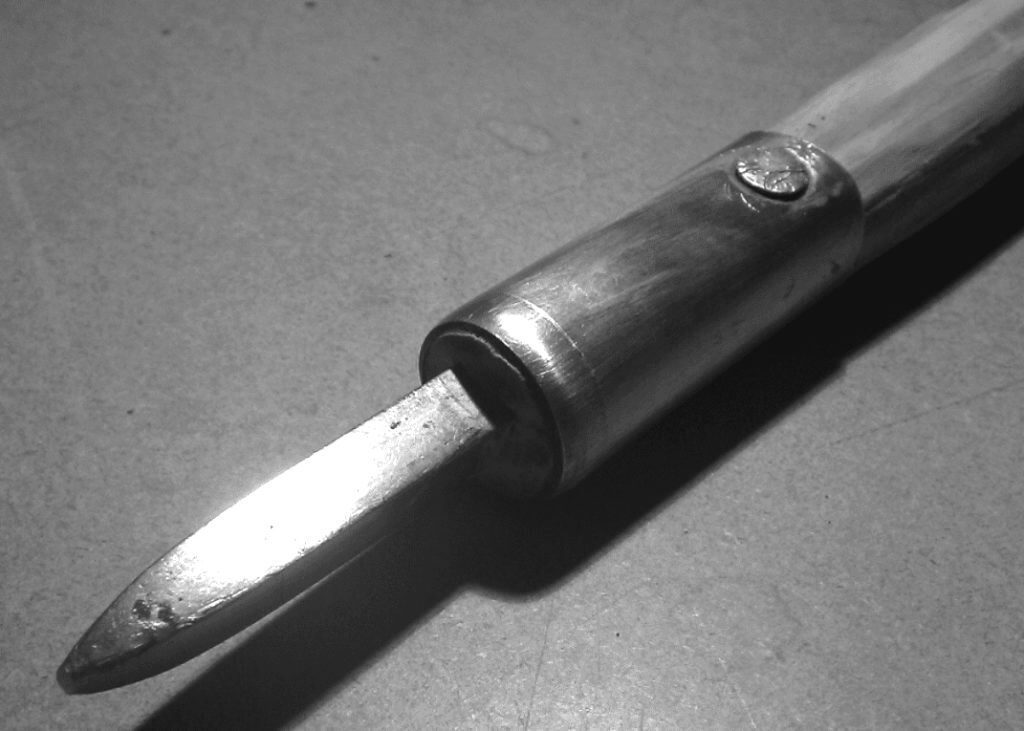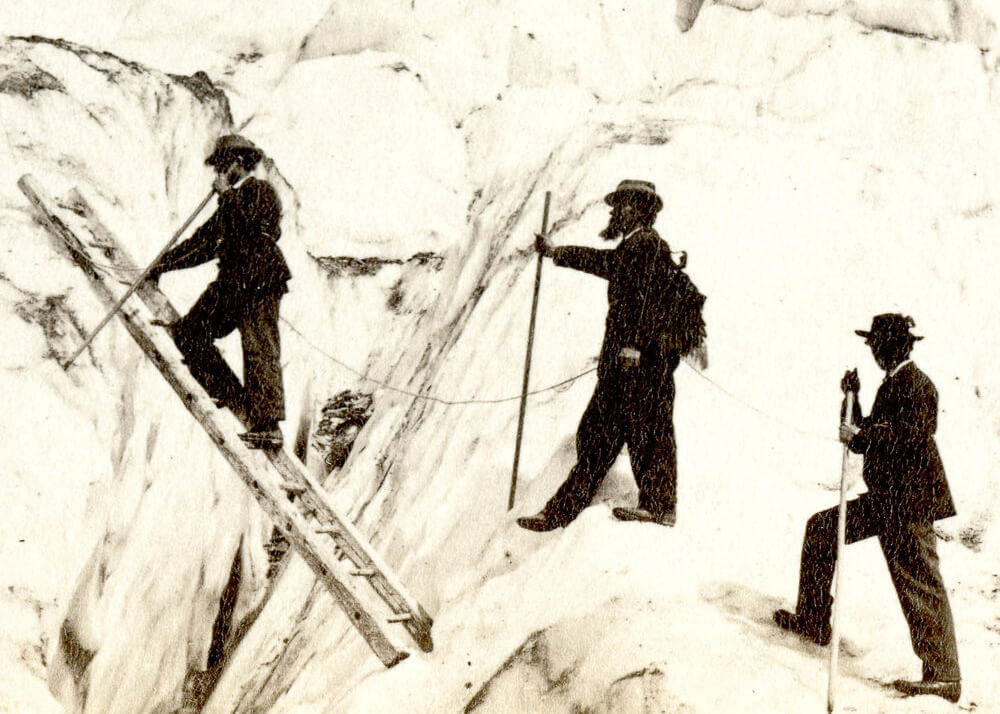A wooden stick on Mont-Blanc
Jacques Balmat and his fellow man Dr Paccard were the first to climb Mont-Blanc in 1786 successfully. They were carrying an alpenstock with them. It is a long steel-tipped wooden stick, used by alpinist. It is considered to be the ancestor of the modern ice axe.
The climbing stick was made of beech, yew or fir wood. They all present different characteristics (weight and stiffness).
Balmat’s alpenstock was a large 3-meter stick. When Saussure did his ascent (in August 1787), he had a 2.6-meter one with him. While nobody knows the inventor, the alpenstock was the first universally-used tool by alpinists.


The Alpenstock and the oldest ice axe
Josias Simmler, the Swiss theologian and classicist, author of the first book relating solely to the Alps (16th century), already mentioned the existence and use of the Alpenstock (“the alpinus baculus”).
It is used as support in steep slopes or to sound glacier and crevasses. Because of its length, Alpinist would also use it to help a fellow climber. The Alpenstock is not a hammering nor an anchoring tool. Alpinists would very often use a small axe to carve steps in the snow or ice for example.
As early as the 18th century, the combination of the Alpenstock and the axe gave birth to the first ice axes.
Until 1870, the habit was for the guide to use an ice axe and for the tourist to use the alpenstock. The length of the pole had decreased quite a lot. In 1875, the Alpenstock was a wooden stick of 1.8m to 2m, as described by (Dauphiné Tourism Society). Made of resistant wood, it should allow the climber to stand on it without breaking it.


The end of it
While it was still used by some, in some valleys, the alpenstock disappeared from the mountains after World War II.
One of the last stories involving the ancestor of the ice axe is the escape of the caporal Anton Hörnle from the Gebirgsjäger (“mountain hunters”). He was made a prisoner in the winter of 1944-45 by the French alpinists, Jacques Boell, an officer of the alpine troops, Alain Le Ray, and captain Stéphane.
While the German mountaineer was on the “point de Ronce” (3,612m) he got arrested by the French group. After spending some time together, Anton Hörnle, took advantage of a brief moment of inattention, to grab his alpenstock and slide down a very steep slope (more than 40 degrees), losing the French soldiers behind.
While used for centuries, the more modern ice axe rapidly replaced the alpenstock in all occasions.

